Updated 24 July 2020
Peter Lobner
My 11 December 2018 post, “Lots of Land Speed Record (LSR) Action in 2018,” provides background information on land speed record governance and a look at the fastest cars competing in the 2018 LSR season. 2018 highlights included:
- The North American Eagle team, with driver Jessi Combs, continued to extend the performance of their jet-powered LSR car on a track in the Alvord Desert in Oregon.
- The Bloodhound team in the UK was saved from insolvency, literally at the last moment, when the business and assets were bought by Yorkshire-based entrepreneur Ian Warhurst.
- Salt conditions at the Bonneville salt flats in Utah were very good and many speed records were broken.
You can read this 2018 post here: https://lynceans.org/all-posts/lots-of-land-speed-record-lsr-action-in-2018/
2019 was a very different year.
- The North American Eagle LSR car crashed during a high-speed run in the Alvord Desert in August, killing driver Jessi Combs.
- The salt conditions at the Bonneville salt flats were poor, resulting in rough driving conditions and generally lower speeds during Bonneville Speed Week (August) and the Utah Salt Flats Racing Association (USFRA) World of Speed (September). The Bonneville World Finals (October) were cancelled because of wet conditions.
- The Carbinite LSR car, the Carbiliner, crashed during a high-speed run at the World of Speed 2019 in September, severely injuring driver Rob Freyvogel.
- The 29th Annual Speed Week at Lake Gairdner, Australia in March had only one run over 300 mph (483 kph) in hot, dry conditions.
- Now with proper financing, the Bloodhound LSR team transitioned to the next phase of the project, arriving at the Hakskeen Pan track in South Africa in October and conducting high-speed testing, which concluded successfully in November.
Let’s take a look at the 2019 LSR season in more detail.
1. North American Eagle
In August 2019, the North American Eagle team, with driver Jessi Combs, returned to the Alvord Desert in Oregon to attempt to break the official Women’s Land Speed Record set by Kitty O’Neil in 1976 with a two-way average speed of 512.710 mph (825.127 kph) in the rocket-powered SMI Motivator at the same venue. The North American Eagle team website is here: https://www.landspeed.com
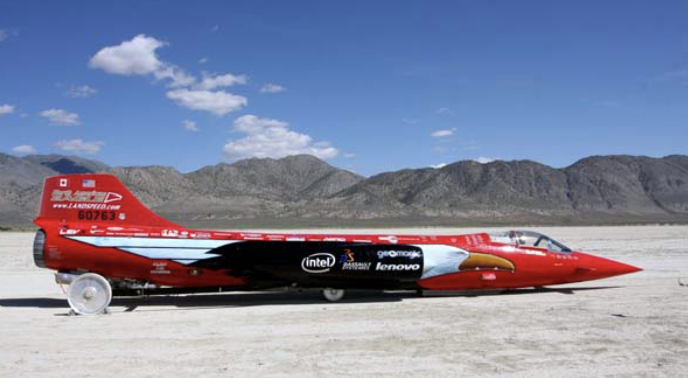
Source: North American Eagle
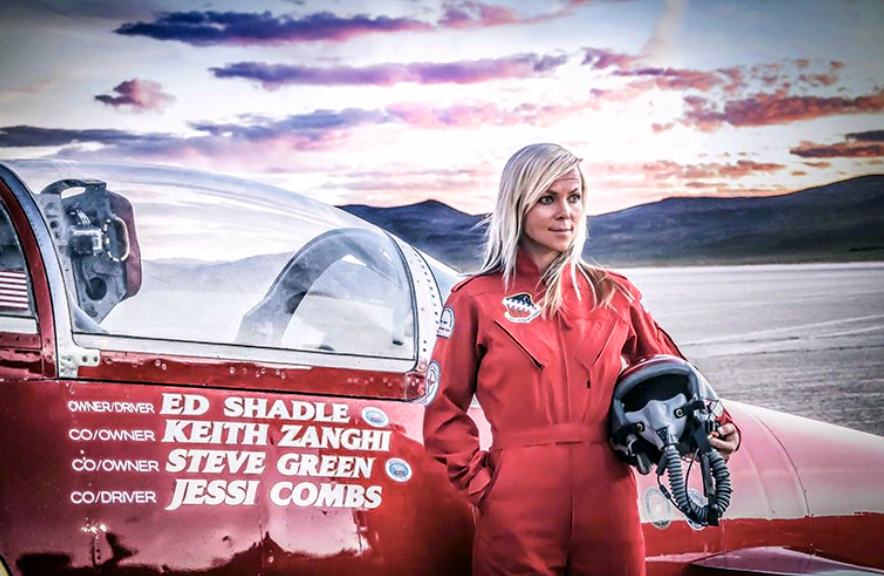
Jessi Combs’s first run on the morning of 27 August 2019 achieved a speed of 515.346 mph (829.369 kph). On the second run, the North American Eagle crashed near the end of the run, killing Jessi Combs. You can watch a short video of this final run, excluding the crash, here: https://www.tmz.com/2019/09/04/jessi-combs-dead-died-jet-car-video-crash-photos-land-speed-record/
An investigation into the cause of the crash revealed that the front wheel assembly of the car collapsed, possibly due to collision damage from hitting something on the track at high speed.
North American Eagle Crew Chief Les Holm reported Jessi Combs’ second run was measured at a speed of 548.342 mph (882.471 kph), yielding a two-way average speed of 531.889 mph (855.992 kph). Hemmings news reported that the North American Eagle team has submitted Jessi Combs’s two-way average speed results to the Guinness Book of World Records to claim the title of fastest woman on the planet.
It is not yet known if Jessi Combs’ two-way average speed will qualify as an official FIA world land speed record.
The Petersen Automotive Museum in Los Angeles held an exhibition entitled “Jessi Combs: Life at Full Speed” to commemorate the life and accomplishments of this extraordinary person.

The Jessi Combs Foundation was founded in 2019. The mission of the Foundation is to “educate, inspire and empower the next generation of female trailblazers and stereotype-breakers.” The Foundation’s website is here: https://www.thejessicombsfoundation.com/mission-statement/
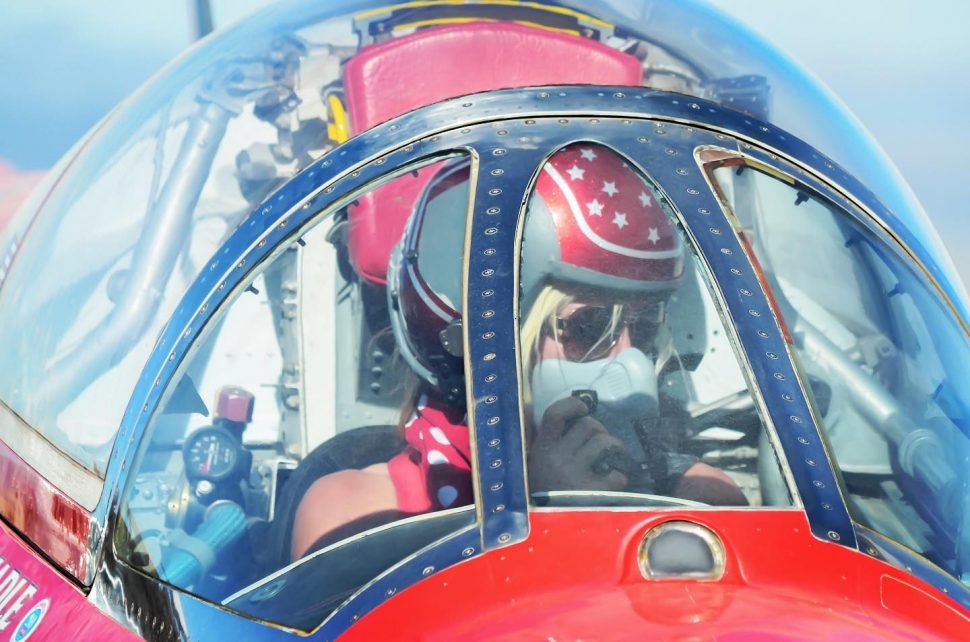
Source: https://www.facebook.com/JessiCombsOfficial/
In June 2020, the Guinness World Record was posthumously awarded to Jessi Combs, declaring: “The fastest land speed record (female) is 841.338 kph (522.783 mph), and was achieved by Jessi Combs (USA) in the Alvord Desert, Oregon, USA, on 27 August 2019. Jessi is the first person to break this record in more than 40 years.” This record is posted on the Guinness World Records website here: https://www.guinnessworldrecords.com/world-records/fastest-land-speed-record-(female)
2. Bonneville Speed Week 2019: 13 – 15 August 2019
Summer storms resulted in poor track conditions at Bonneville in 2019, with the salt wet enough to delay the start of Speed Week and then limit the performance of teams that were able to run. You’ll find a more detailed description of track conditions here: https://journal.classiccars.com/2019/08/24/they-came-they-saw-but-weather-ruled-at-bonneville/
The Southern California Timing Association’s (SCTA) Speed Week 2019 results are posted here: http://www.scta-bni.org/2019-sw-race-results.html
Now let’s look at a few of the top challengers at Speed Week 2019.
Turbinator II
At the Bonneville World Finals in 2018, Team Vesco’s gas turbine powered Turbinator II, with Dave Spangler driving, made a one-way run through the measured mile of 493.996 mph (795.009 kph), with an exit speed of 503.332 mph (810.034 kph). Turbinator II became the world’s first wheel-driven vehicle to exceed 500 mph and 800 kph.
In 2019, Dave Spangler was unable to complete a single run with Turbinator II during Bonneville Speed Week 2019. Three runs on the 2-mile “short” course were attempted on 14 – 15 August, but none were completed, for a variety of issues. You can watch a short video about Team Vesco at Speed Week 2019 here:
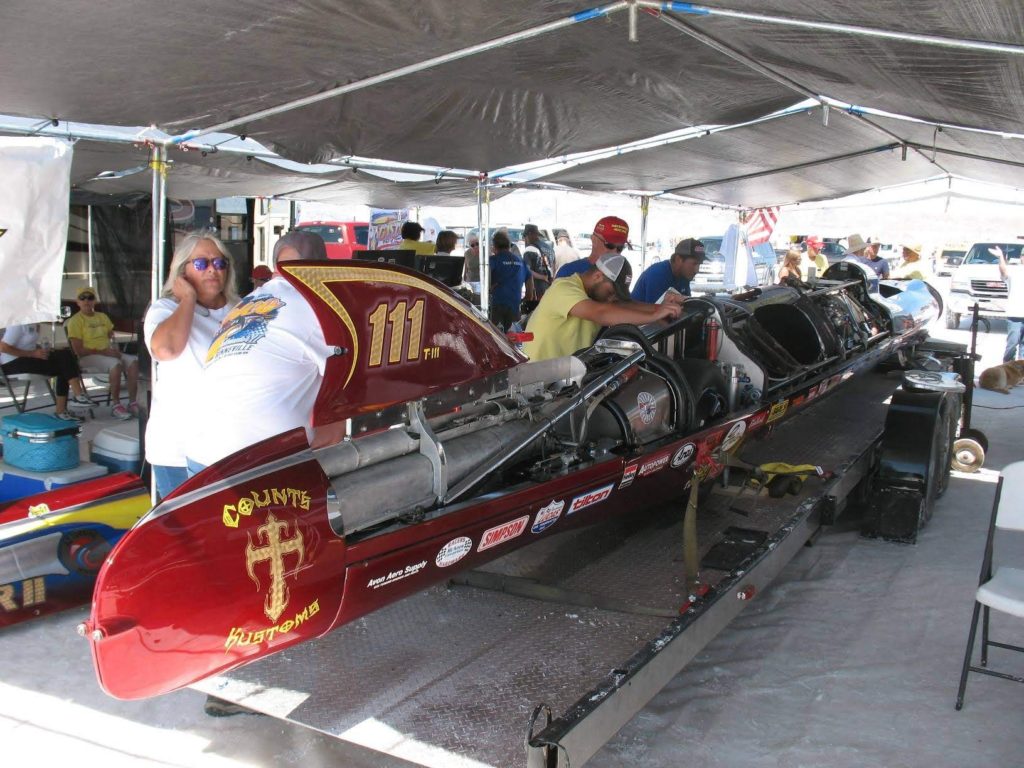
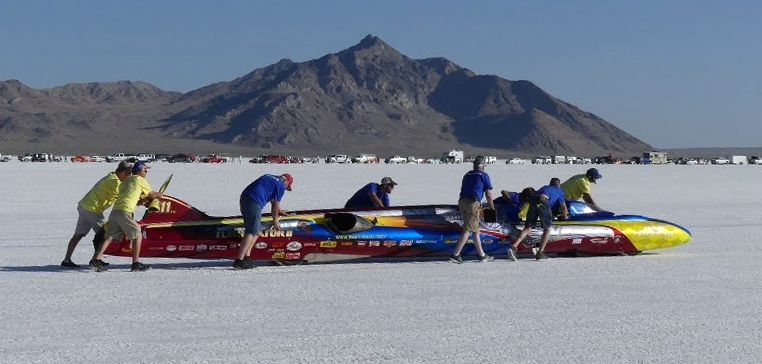
After Speed Week 2019, Team Vesco reported, “In the interest of safety and to correct our course while navigating toward our goal to become the first wheel driven car to set an official National or World record over 500 MPH, we must discontinue racing for the remainder of 2019. To improve our team, we have already begun a search for a company with turbine control engineering capabilities to partner with us.” You’ll find more information on the Team Vesco website here: https://www.teamvesco.com
Speed Demon
George Poteet’s Speed Demon is a blown (supercharged or turbocharged) fuel (not gasoline) streamliner (BFS) that currently holds two-way land-speed records in five out of seven of Bonneville’s BFS classes: A, B, C, D and F. The two remaining classes are AA/BFS and E/BFS. The team’s goals for 2019 were to achieve records in these remaining classes and to raise its fastest two-way speed record to over 480 mph (772 kph). The teams current record, set in 2013, stands 437.183 mph (703.578). You can read more about these plans in the following Motor Tend article: https://www.hotrod.com/articles/pottet-speed-demon-aims-480-mph-bonneville/
To compete in several different classes, Speed Demon is designed to accommodate several different displacement engines that have been configured to fit inside the car’s svelte fuselage. At Speed Week 2019, the team had four different Duttweiler engines to challenge BFS records in Classes A, AA, C and E.
- A 443 cubic inch twin-turbo LS engine for class A/BFS rated at around 2,870 hp with 40 pounds of boost. You can read a 30 July 2019 article on a 441 CID version of this engine here: https://www.msn.com/en-us/autos/enthusiasts/ken-duttweilers-2625hp-ls-bonneville-engine/ar-AAF3Drj
- A “big block” 555 cubic inch Chevy engine for class AA/BFS, rated at around 3,200 hp at 8,000 rpm and 34 pounds of boost.
- An intermediate size 368 cubic inch Chevy engine for class C/BFS.
- A “small block,” 256 cubic inch Chevy engine for class E/BFS: dyno tested to 2,632 hp at 9,640 rpm and 51 pounds of boost.
Here’s a photo of the Class A Duttweiler 443 CID LS Bonneville engine configured for Speed Demon.
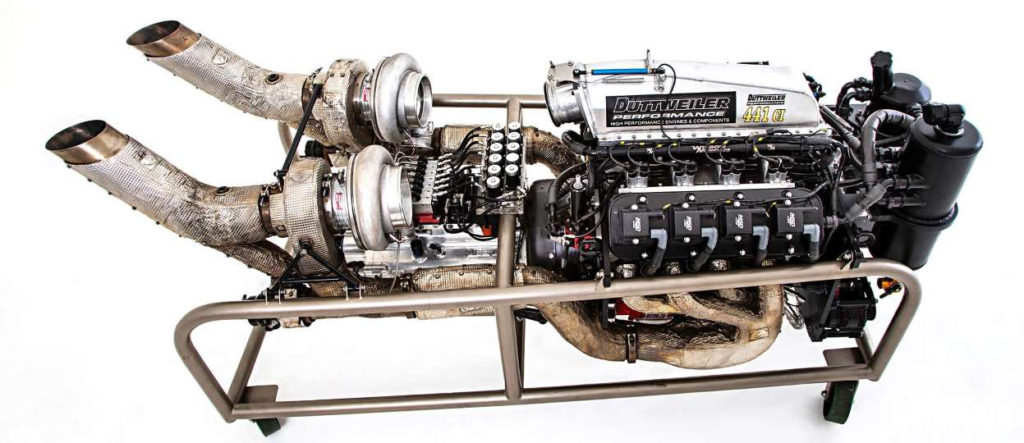
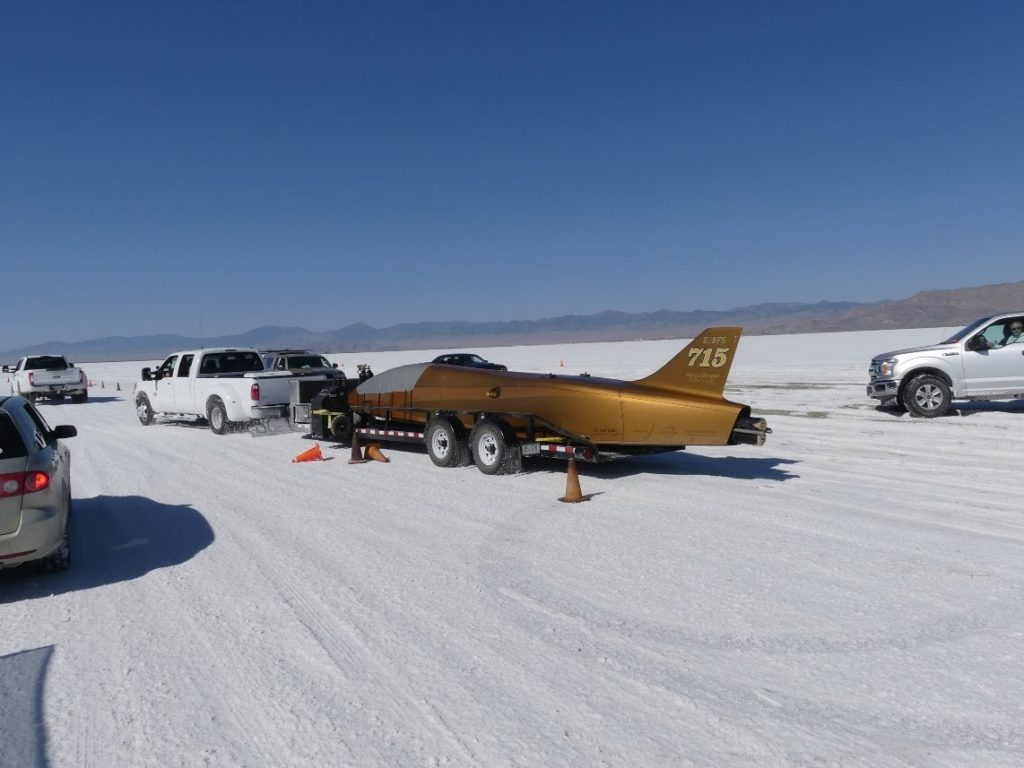
Speed Demon was the only car that made runs over 300 mph (483 kph) during Speed Week 2019. On the “long” course, which was shortened to two miles because of poor salt conditions, Speed Demon achieved the following speeds:
- 13 Aug 2019: 300.648 mph (483.846 kph) and 332.815 mph (535.614 kph) with the E “small block” engine
- 15 Aug 2019: 369.533 mph (594.706 kph) with the AA “big block” engine
None of these runs broke an existing class speed record. However, Speed Demon and George Poteet were honored with the Hot Rod Magazine trophy for fastest run during Speed Week 2019.
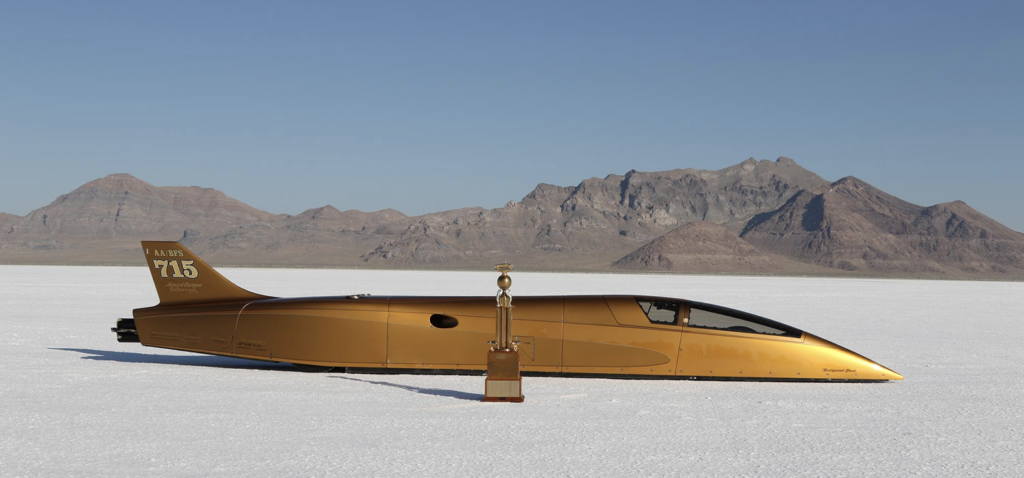
Source: https://www.hotrod.com/articles/george-poteets-speed-demon-tops-2019-bonneville-speed-week/
Salt Shark
Tom Flattery’s Salt Shark, a Class B blown gas (gasoline) streamliner (B/BGS), made its first appearance at Bonneville Speed Week 2019. The Salt Shark is powered by a twin-turbo, 427 cubic inch, fuel injected LSX engine from Golen Engine Service in New Hampshire. Salt Shark reached a maximum speed of 290.568 mph (467.624 kph) on 15 August 2019, making it the second fastest car at Speed Week 2019 after Speed Demon. You’ll find more information on the Salt Shark Facebook page here: https://www.facebook.com/Bonneville-Salt-Shark-226594851348688/
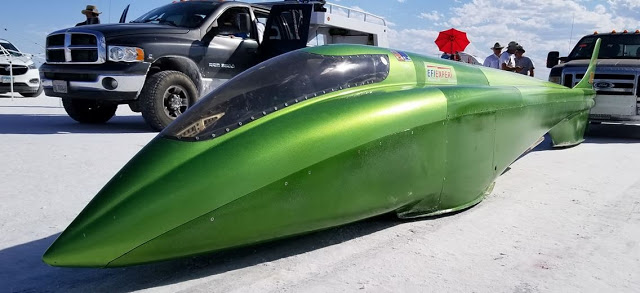
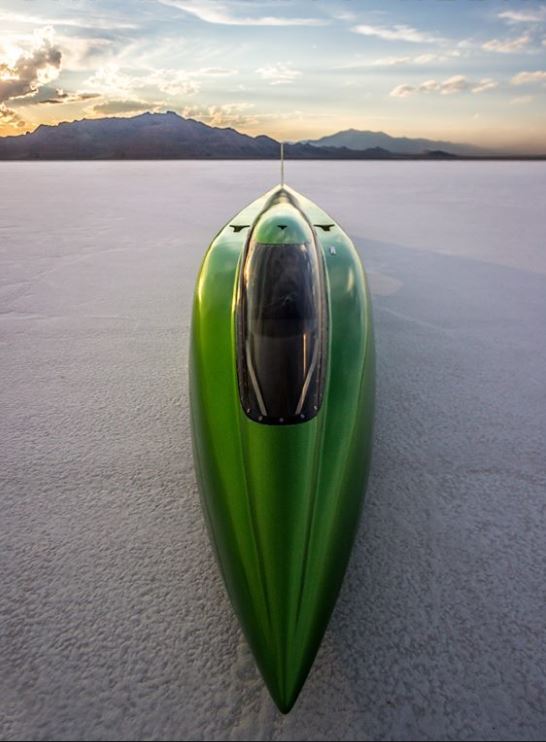
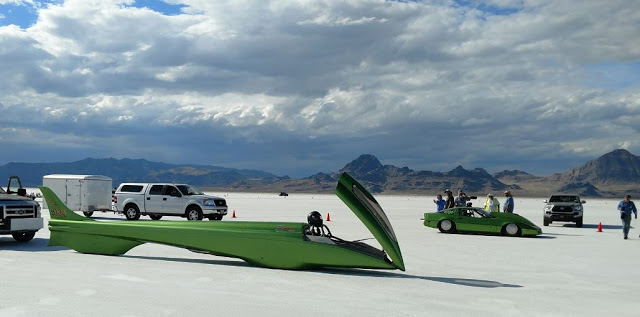
Target 550
The Treit and Davenport Target 550 is a Class AA blown fuel streamliner (AA/BFS). At Bonneville Speed Week 2019, new driver Valerie Thompson took the car to a maximum speed of 270.762 mph (435.749 kph) on 15 August 2019. Rough salt conditions prevented a return run.
At the Utah Salt Flats Racing Association’s (USFRA) World of Speed event in October 2019, rough salt conditions persisted. The team reported, “On its first run, the car was bouncing up and down and bottoming almost from the start line. Valerie clocked at 291 mph (468 kph), but the car went airborne due to the rough course. Parts broke, damaging both engines. The drag chutes deployed properly and the car came to a safe stop. Thankfully no one was hurt.”
In January 2020, the Treit and Davenport team plans to ship Target 550 to Australia. With Valerie Thompson driving, the team will challenge the world speed record for its class in March 2020 during Speed Week at Australia’s Lake Gairdner.
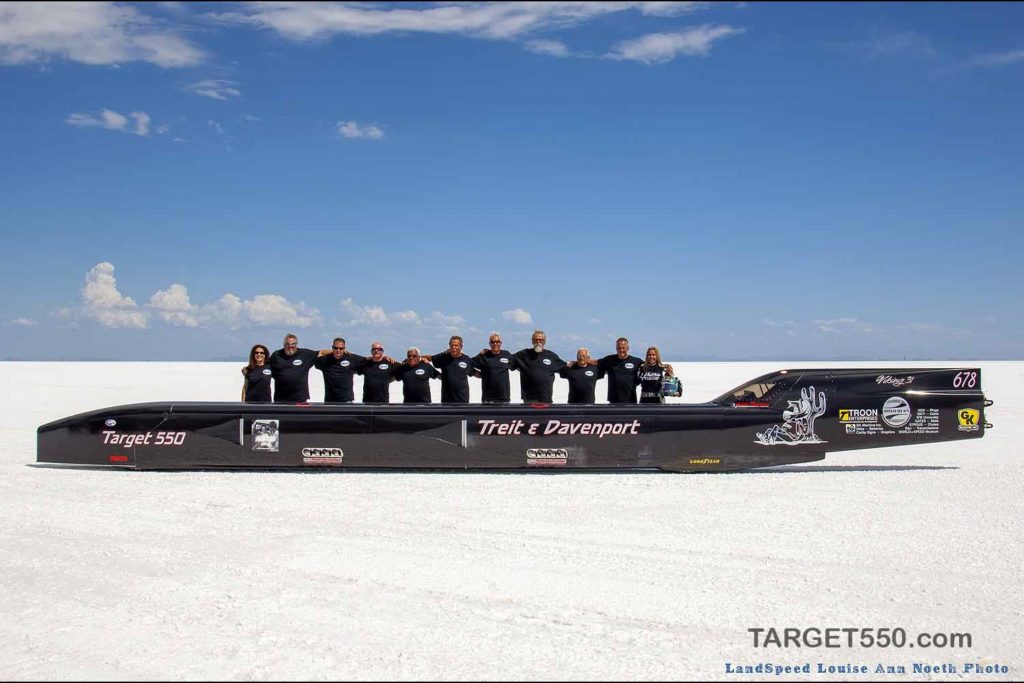
You’ll find more information on the team’s website here: https://www.target550.com
3. Utah Salt Flats Racing Association (USFRA) World of Speed 2019: 16 – 16 September 2019
Like Bonneville Speed Week 2019, the USFRA World of Speed 2019 was affected by wet salt conditions. Results are posted on the USFRA website here: https://saltflats.com
Only three cars reached speeds greater than 300 mph (483 kph) on runs during World of Speed 2019. One of them, the Carbinite LSR car, the Carbiliner, was destroyed in a high-speed crash and the driver was seriously injured.
Let’s take a look at the three fastest LSR cars at this meet.
Carbinite LSR – Carbiliner
The Carbiliner is a Class AA blown fuel streamliner (AA/BFS). In 2018, it was one of five LSR vehicles to exceed 400 mph (644 kph) during Bonneville Speed Week, making runs of 406.750 mph (654.601 kph) and 413.542 mph (665.531 kph).
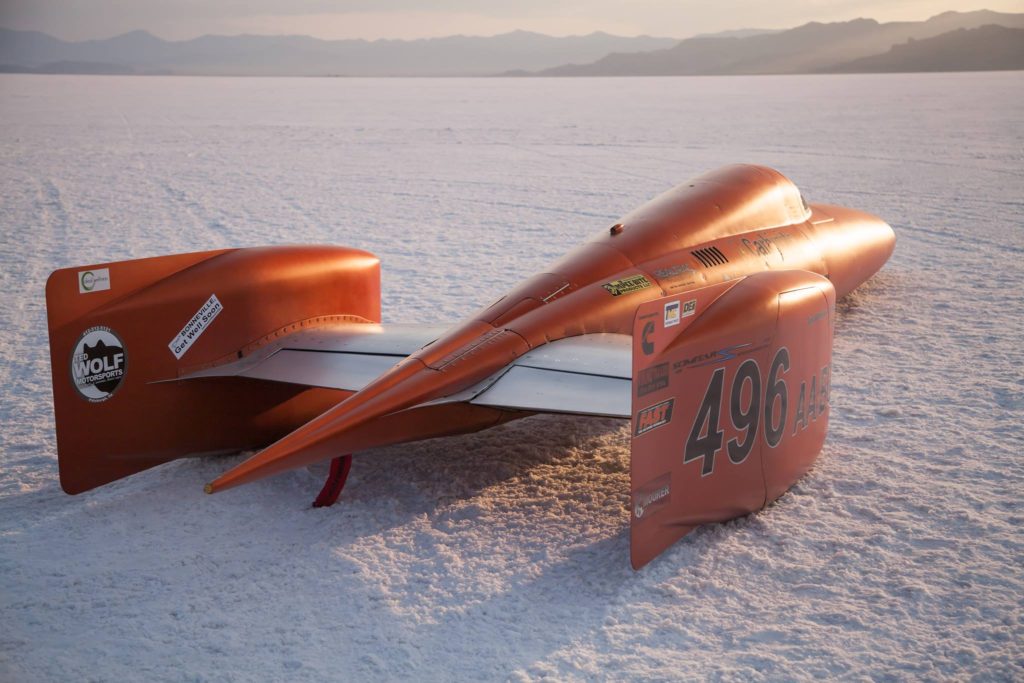
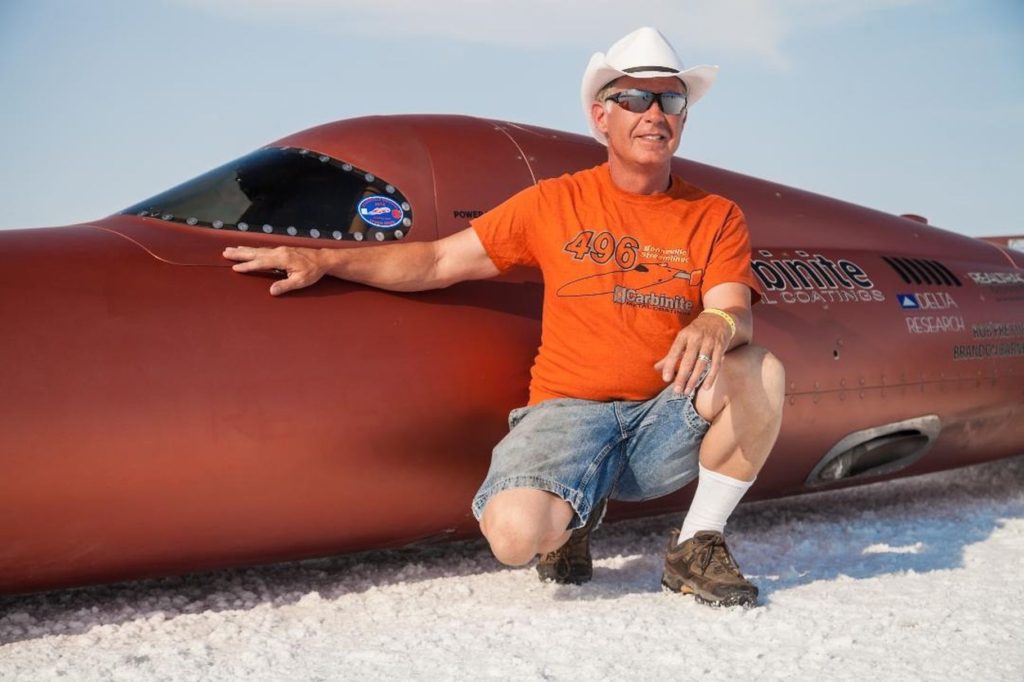
Source: Sue Freyvogel via the Desert News
At World of Speed 2019, the Carbiliner, driven by Rob Freyvogel, crashed during a high-speed run on 15 September 2019. The car had been measured at an average speed of 392 mph (631 kph) and was still accelerating heading into the final mile of the long course when the crash occurred. While the rugged structure of the cockpit provided some protection, Rob Freyvogel was seriously injured.
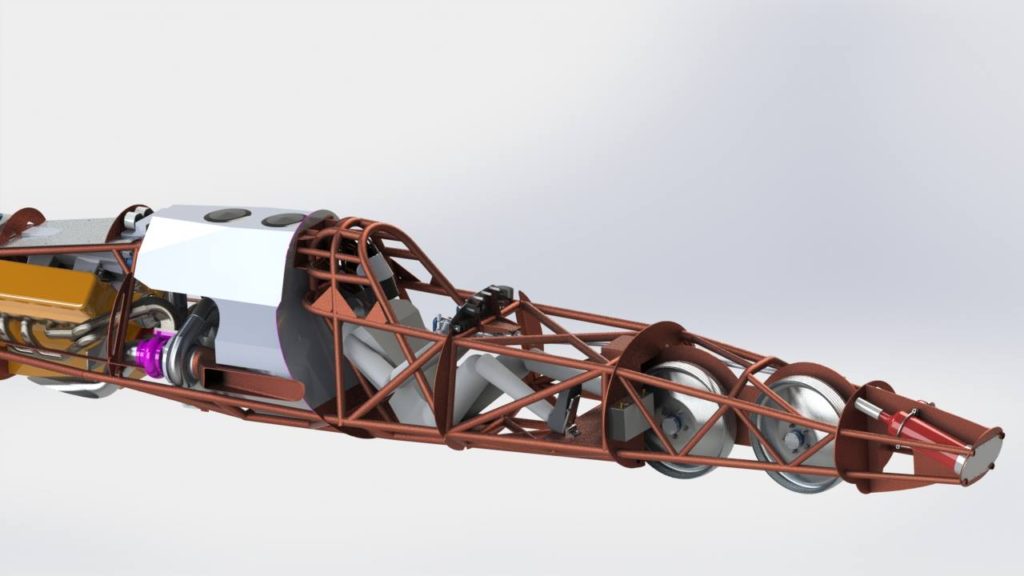
Source: https://www.facebook.com/CarbiniteLSR/
You can follow Rob Freyvogel’s progress toward recovery on the Carbinite LSR Facebook page here: https://www.facebook.com/CarbiniteLSR/
A GoFundMe donation page has been set up for the family at the following link: https://www.gofundme.com/f/help-the-freyvogels
Strasburg Lakester
The Strasburg family’s LSR car is a Class C blown fuel lakester (C/BFL). With almost perfect salt conditions at Bonneville in 2018, the Strasburg family set a new world land speed record for a lakester (an open-wheeled car) with an average speed of 373 mph (600 kph).
At World of Speed 2019, this lakester, driven by Anita Strasburg, exceeded 300 mph (483 kph) on several runs. On the best run, Anita Strasburg recorded 347.484 mph (559.221 kph) in the last (3rd) mile with an exit speed of 350.493 mph (564.064 kph).
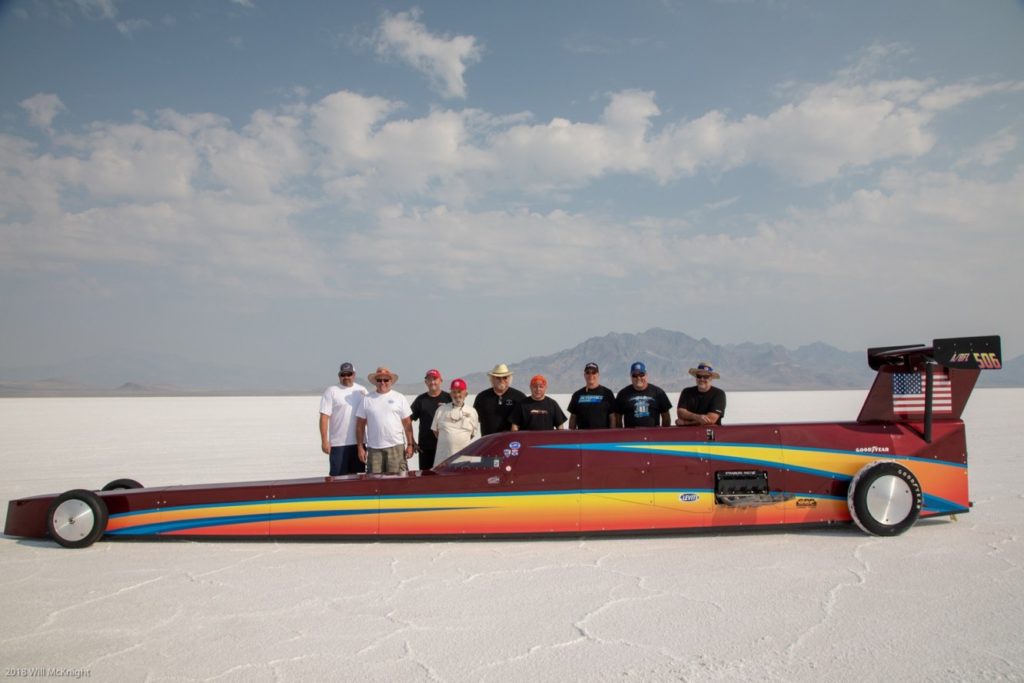
Beamco Streamliner
The Beamco is a Class D unblown gas streamliner (D/GS) owned by Team Vesco and driven by Bob Blakely.
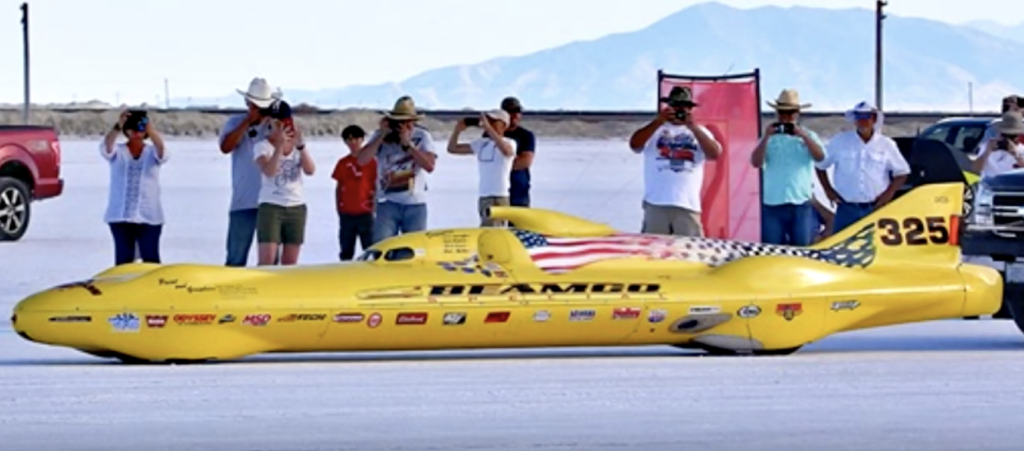
Screenshot from Real Tuners video at USFRA 15 September 2019
In the following video, you can take a ride aboard the Beamco streamliner as Bob Blakely raised the D/GS 2-way average speed record to 312.664 mph (503.184 kph) during the World of Speed 2019 in rough course conditions.
Blakely also became a new 300 mph Club member.
4. Bonneville World Finals 2019
On 28 September 2019, Bill Lattin, SCTA President, reported: “Unfortunately Mother Nature is at again. We were able to drag a good course and now there is standing water on it. Due to the weather forecast coming we have decided to cancel World Finals.”
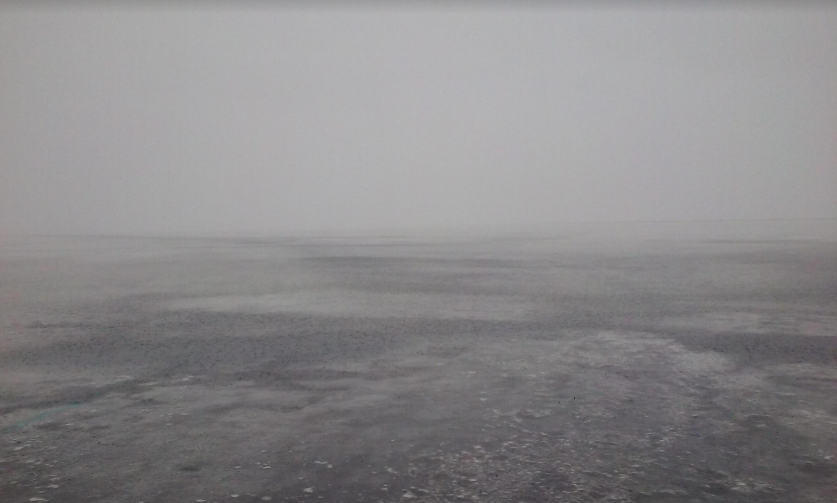
Source: SCTA via https://www.facebook.com/Bonneville-Racing-News-130262594200423/
5. Bloodhound LSR
After being rescued from insolvency in December 2018 by Ian Warhurst, a new company called Grafton LSR Ltd. was formed in March 2019 to be the car’s legal owner. The team was renamed “Bloodhound LSR” and the team headquarters were moved to the UK Land Speed Record Center in Berkeley, Gloucestershire, UK. The Bloodhound LSR website is here: https://www.bloodhoundlsr.com
The configuration of the jet + rocket-propelled Bloodhound LSR is shown in the following diagram.
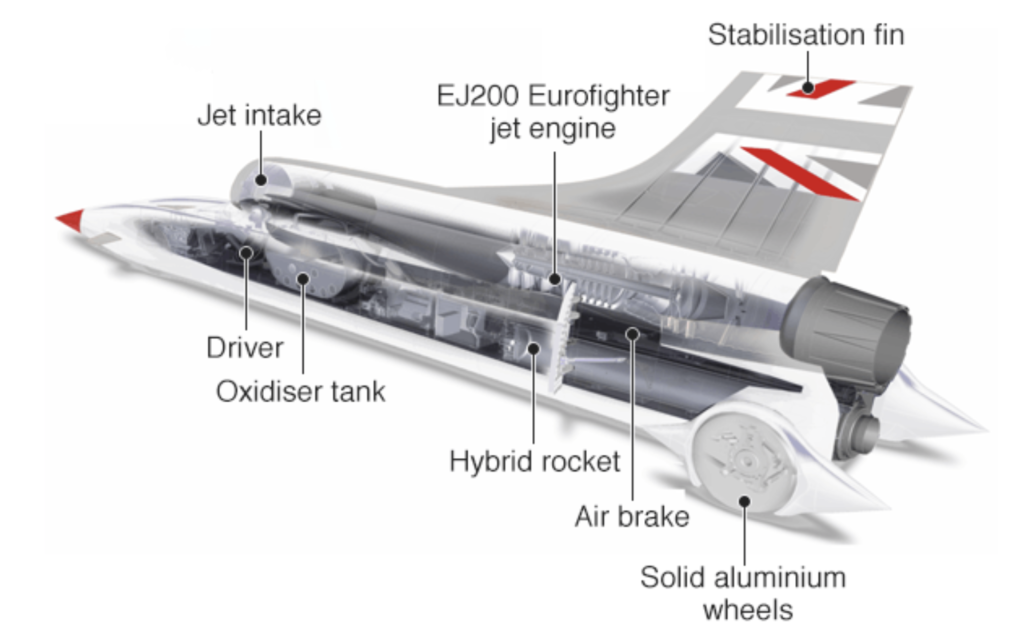
The team’s goal for 2019 was to conduct high-speed testing of the Bloodhound LSR at the intended land speed record venue, the Hakskeen Pan in South Africa. The Bloodhound LSR team states that high-speed testing is “needed to allow the team to test many aspects of the car and all operational procedures in advance of the world land speed record runs, currently planned for late 2020.”Hakskeen Pan is a very flat dry lake bed with the world’s largest “unworked” saltpan. A test track measuring 20 km (12.4 miles) long and 1,100 meters (0.68 mile) wide has been established on the saltpan for use by Bloodhound LSR. The layout of the test track on Hakskeen Pan is show in the following diagram. For more information on this test track, see my 8 September 2015 post, “Just How Flat is Hakskeen Pan?” here: https://lynceans.org/all-posts/just-how-flat-is-hakskeen-pan/
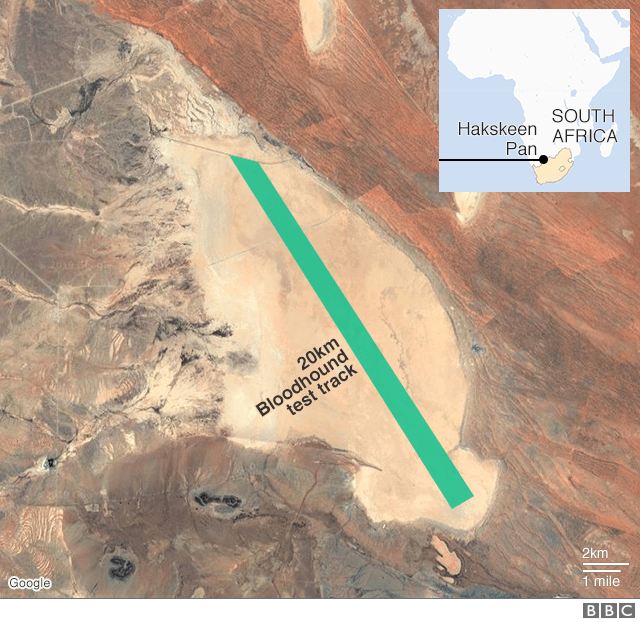
For the high-speed test phase, the Bloodhound LSR was propelled only by its EJ200 jet engine, which is rated at 90 kN (20,230 pounds) of thrust. This engine is based on Rolls-Royce gas turbine engine technology and is built by the EuroJet Turbo GmbH consortium. The Nammo hybrid rocket engine was not installed for the 2019 high-speed tests.
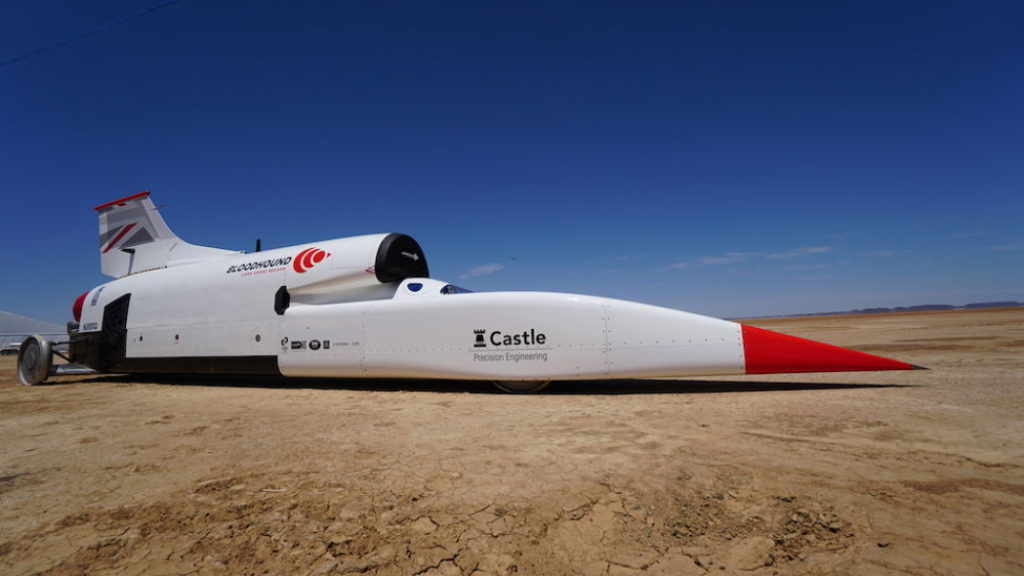
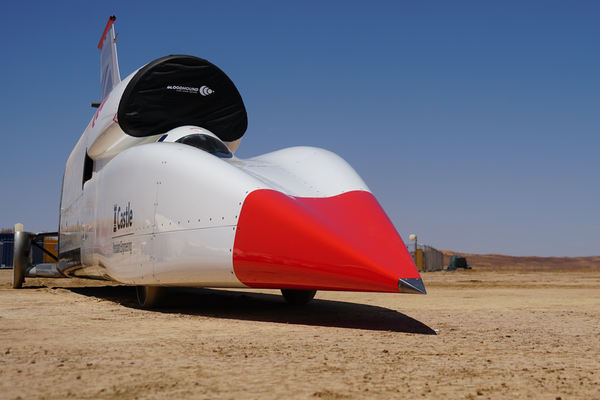
Source, both photos: Bloodhound LSR
Test runs began on 27 October 2019, with Andy Green driving the Bloodhound LSR. Information on all of the test runs, and selected videos, are available on the Bloodhound LSR website, under the “News” tab. Here’s the direct link: https://www.bloodhoundlsr.com/category/bloodhound-lsr-news/
High-speed testing was completed on 17 November 2019 with a 628 mph (1,010 kph) run. The team was pleased to report, “Mission accomplished.” You can watch a short video of this final high-speed test run here.
BBC reported, “The car’s costs are currently being underwritten by wealthy Yorkshire businessman Ian Warhurst. He says the next phase of the project will have to be funded by others, most likely corporate sponsors….. ‘With the high-speed testing phase concluded, we will now move our focus to identifying new sponsors and the investment needed to bring Bloodhound back out to Hakskeen Pan in the next 12 to 18 months’ time.’”
Development continues on the hybrid rocket engine that will be added to the Bloodhound LSR for the next set of high-speed runs at Hakskeen Pan.
You’ll find my previous posts on the Bloodhound LSR team and car here:
- 2 March 2015, The BLOODHOUND Project – Creating a 1,000 mph Land Speed Record Car and Inspiring a New Generation of Engineers; https://lynceans.org/all-posts/the-bloodhound-project-creating-a-1000-mph-land-speed-record-car-and-inspiring-a-new-generation-of-engineers/
- 23 January 2017, BLOODHOUND SSC Making Progress Toward a World Land Speed Record Attempt in 2017; https://lynceans.org/all-posts/bloodhound-ssc-making-progress-toward-a-world-land-speed-record-attempt-in-2017/
6. 29th Annual Speed Week at Lake Gairdner, Australia
Speed Week at Lake Gairdner was held from 4 to 8 March 2019 in hot, dry weather with fair salt conditions. There was only one run over 300 mph (483 kph) at this meet. Jim Knapp’s #1584, the Knappsters Streamliner, which is a Class AA blown fuel streamliner (AA/BFS), made the top speed run of the meet at 309.438 mph (497.994 kph).
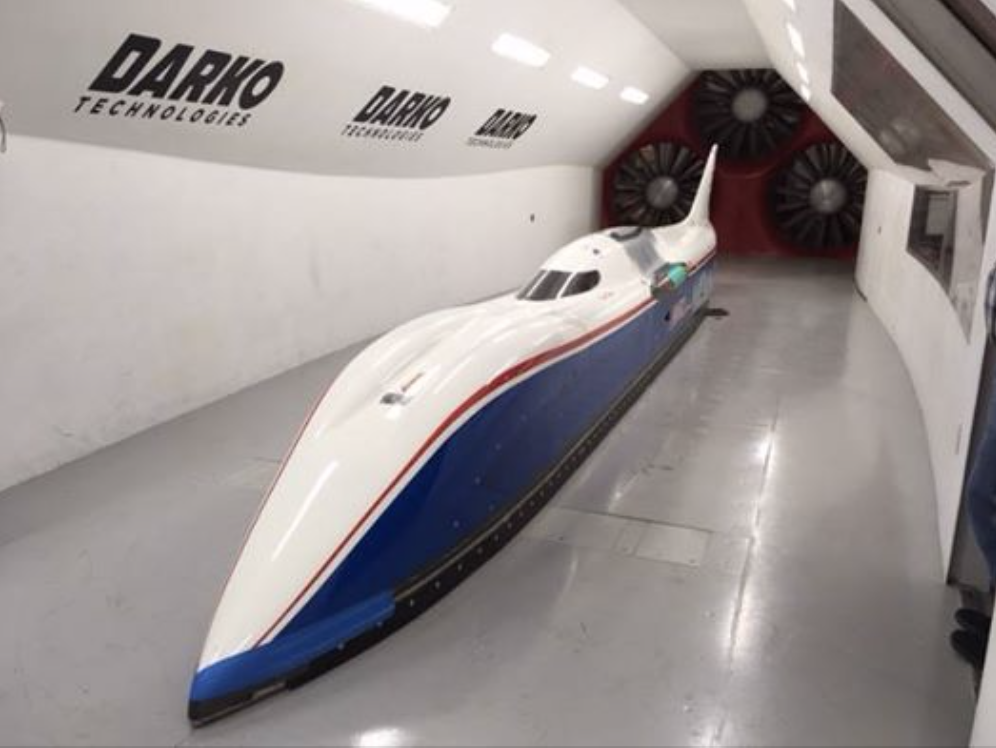
Source: Darko Technologies via https://www.facebook.com/CookLSS/
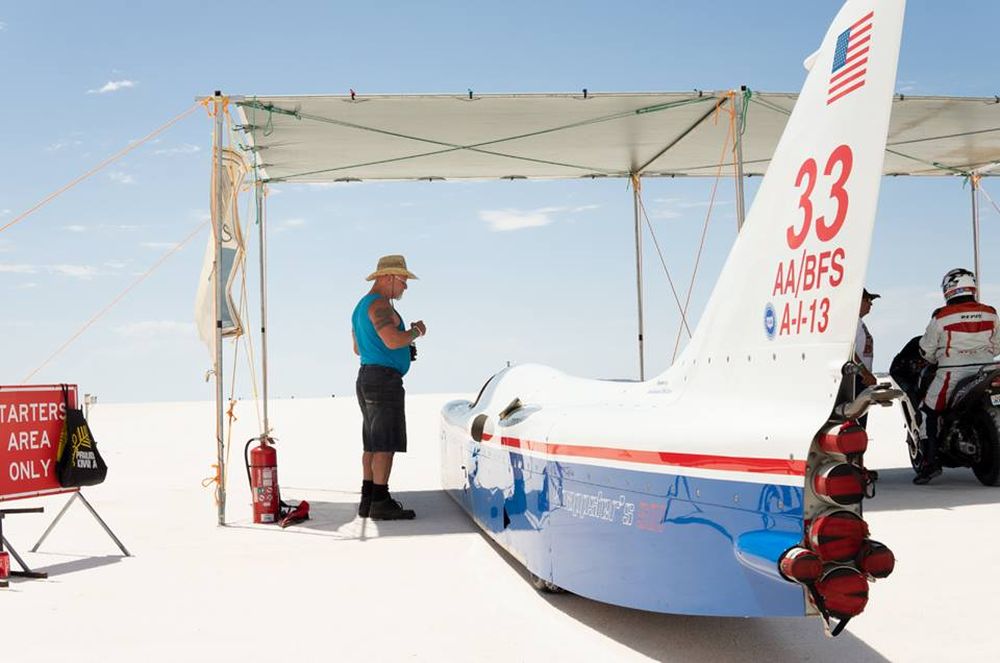
Rodders Project via http://www.dlra.org.au/2019.htm
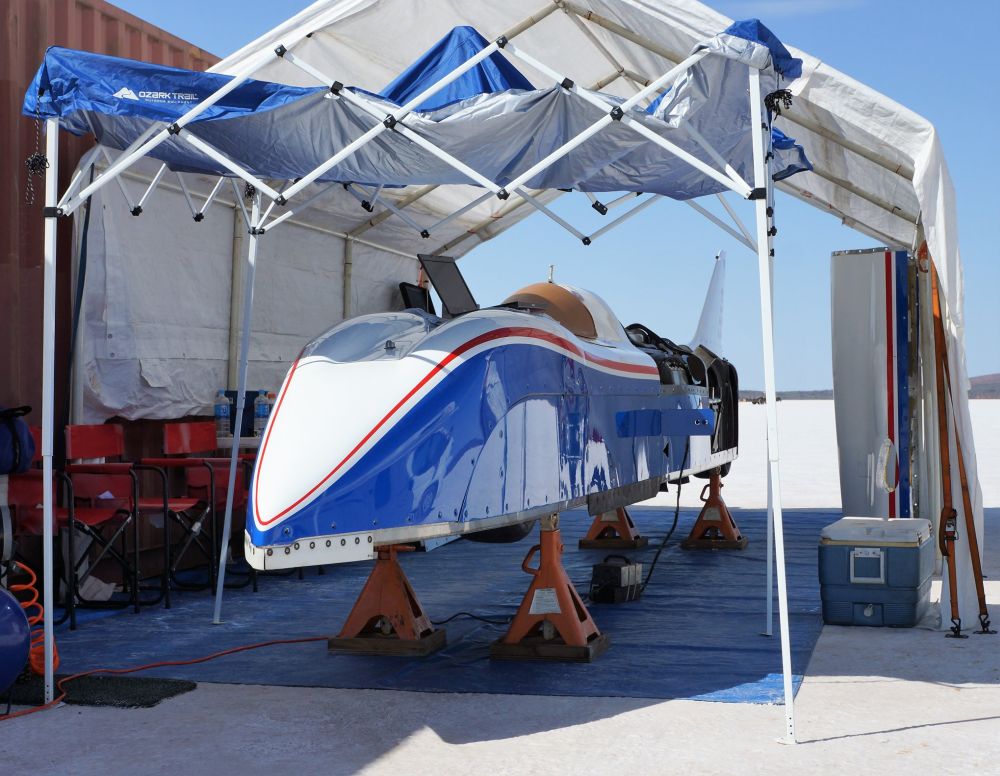
Walt Radobike via http://www.dlra.org.au/2019.htm
The record for the top speed run at the Annual Speed Week at Lake Gairdner was set in 2018 by Les Davenport driving the Treit and Davenport Target 550, another AA/BFS, at 345.125 mph (555.425 kph). Track conditions and weather were excellent in 2018. The Treit and Davenport team is planning to be back in 2020.
You’ll find a summary of the 29th Annual Speed Week results here: http://www.dlra.org.au/2019.htm
7. The world’s fastest piston-powered car, Challenger 2, is for sale
Challenger 2 is a Class AA unblown fuel streamliner (AA/FS). Danny Thompson’s record-setting 448.757 mph (722.204 kph) average runs in Challenger 2 during Bonneville Speed Week 2018 set a new official world land speed record for piston-powered cars.
In November 2019, Mecum Auctions announced that this famous streamliner will come up for auction at Mecum’s Kissimmee, Florida event in January 2020. No starting price has been announced. In case you’re interested, you’ll find Mecum’s listing for the Challenger 2 here: https://www.mecum.com/lots/FL0120-397299/1968-challenger-2-streamliner/
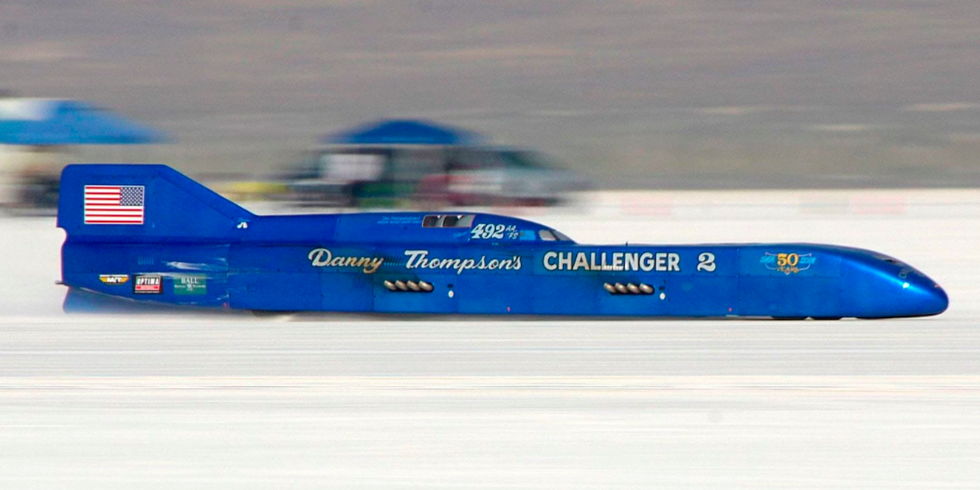
8. 1959 Mooneyes Moonliner on display at Speed Week 2019
At Bonneville Speed Week 2019, the beautiful 1959 Mooneyes Moonliner, built by Jocko Johnson for Dean Moon, was on display. This streamliner originally was powered by an Allison V-12 aircraft engine; later replaced by a fuel-injected, big-block Chevrolet engine. You can follow the Moonliner on Facebook here: https://www.facebook.com/Mooneyes/
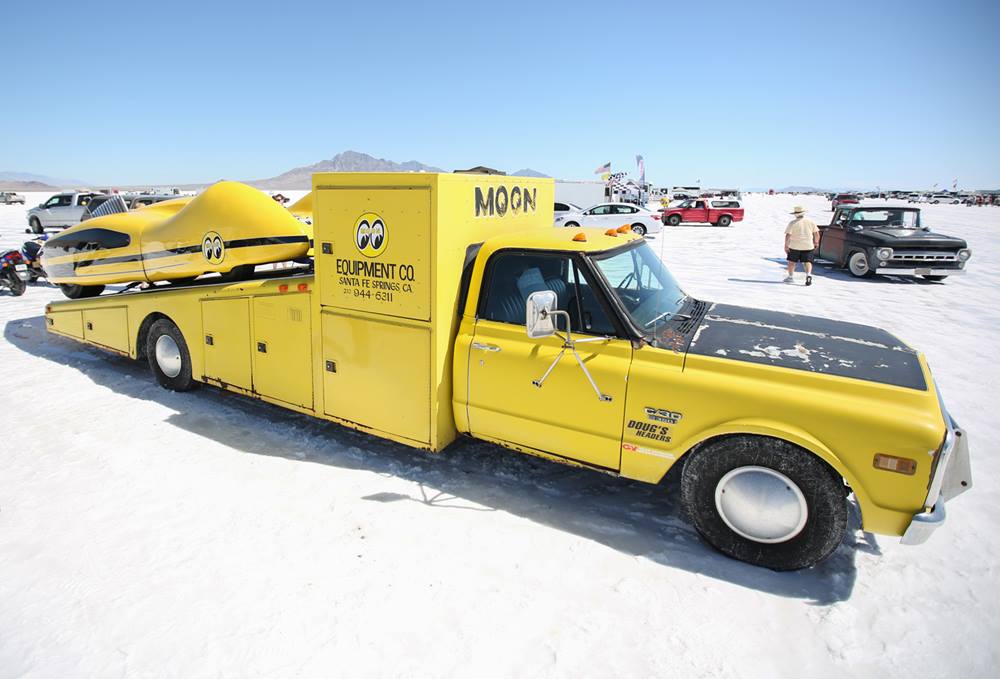
Source: Brandan Gillogly photo via https://www.hagerty.com/

Source: https://gtspirit.com/2019/08/14/photo-report-spirit-speed-bonneville-speed-week-2019/
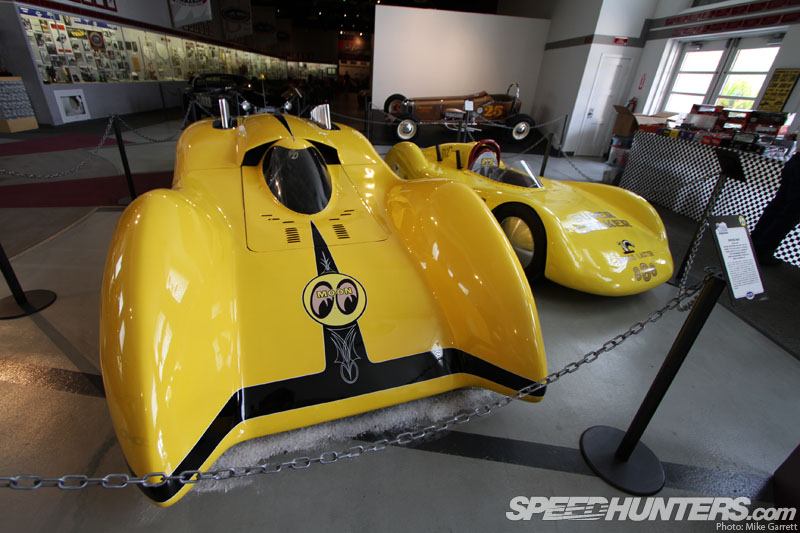
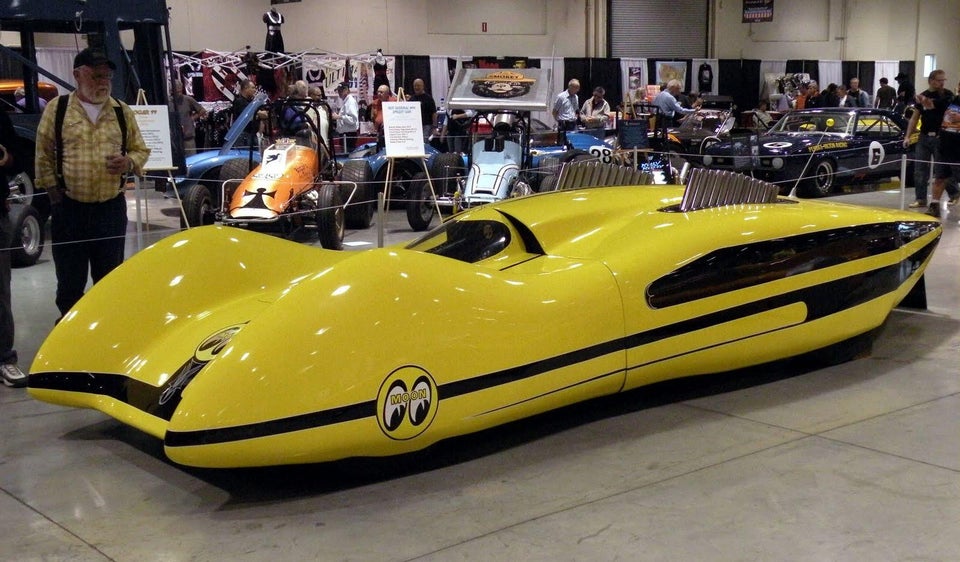
The Moonliner was only run for exhibitions and car shows, and never competed at any speed trials. Nonetheless, the Moonliner is an exotic piece of rolling automotive art that could have been an exciting Class AA unblown gas streamliner (AA/GS).
In 1974, the Moonliner, powered by the big-block Chevrolet engine, driven by Gary Gabelich, and painted red and black (Budweiser colors) was at the Bonneville salt flats for a publicity run for Budweiser. The Moonliner is reported to have reached 285 mph (458 kph) during this event.
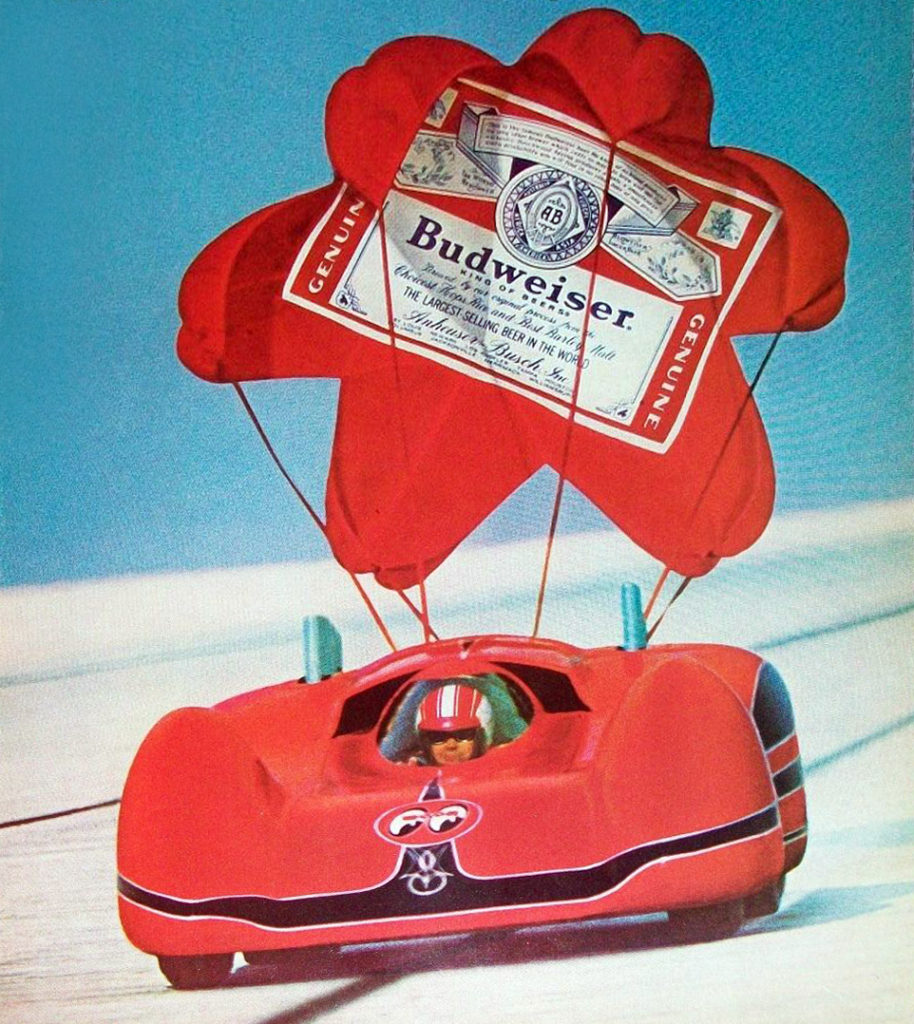
Source: 1974 Budweiser advertisement
You’ll find many historic photos of the Moonliner at Bonneville in 1974 on the Getty Images website at the following link. Be sure to check out the photos of the unusual exhaust system.